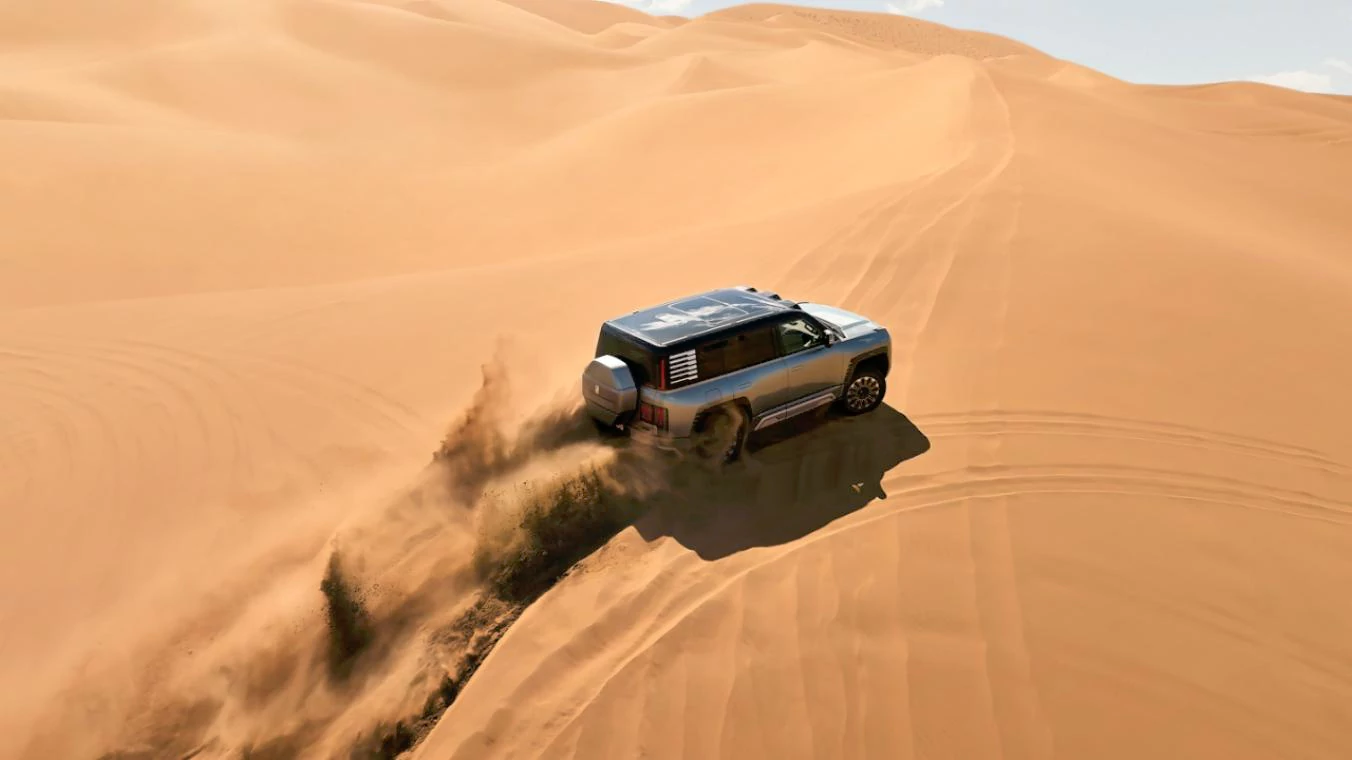The UAE is a paradise for off-road enthusiasts, offering some of the world’s most spectacular desert landscapes. Among these, the majestic dunes of Liwa and Al Badayer stand out as iconic destinations for adventure seekers. However, driving on dunes is not your average off-road experience—it requires specialised skills, equipment, and techniques to ensure both safety and enjoyment. In this guide, we’ll explore everything you need to know about mastering dune driving, from preparation to advanced techniques.

Understanding Dune Driving
Dune driving is a unique off-roading activity that involves navigating steep, shifting sand dunes. Unlike hard-packed dirt trails or rocky terrain, dunes are constantly changing due to wind and weather, making them unpredictable and challenging. Successful dune driving combines understanding the terrain, using the right equipment, and mastering specific driving techniques.
Essential Preparations Before Hitting the Dunes
Before venturing into the desert, proper preparation is crucial. Here’s what you need to do:
Vehicle Selection
Choose a vehicle designed for off-road driving. Popular choices in the UAE include the Toyota Land Cruiser, Nissan Patrol, Jeep Wrangler, and Ford Raptor. Look for features like:
- High ground clearance
- Low-range gearing
- Four-wheel drive (4WD)
- Powerful engine performance

Equipment Checklist
Ensure your vehicle is equipped with essential off-road tools, including:
- Tyre Pressure Gauge: Lower your tyre pressure to 12–18 PSI to improve traction on soft sand.
- Portable Air Compressor: For re-inflating tyres after leaving the desert.
- Recovery Gear: Include a tow rope, shovel, traction boards, and a sand jack.
- Emergency Supplies: Carry water, snacks, a first-aid kit, a flashlight, and a GPS device or satellite phone.
- Skid Plates: Protect your vehicle’s undercarriage from damage.
Plan Your Route
Familiarise yourself with the area and plan your route in advance. Popular dune-driving destinations like Liwa Oasis and Al Badayer often have designated trails and maps available. Use reliable GPS tools and ensure you have a backup system, such as a physical compass and map.
Travel in Groups
Never go dune driving alone. A convoy of at least three vehicles is recommended for safety. Use two-way radios to stay in constant communication with your group.
Techniques for Dune Driving
Once you’re prepared, it’s time to tackle the dunes. Follow these techniques to navigate the sand safely and effectively:
Approach with Confidence
- Assess the Dune: Before driving up a dune, stop to evaluate its height, slope, and texture. Avoid steep or unstable sections.
- Choose the Right Line: Plan your path to avoid sharp turns or sudden stops.
Tyre Management
- Lower tyre pressure to increase surface contact with the sand, providing better grip.
- Check pressure periodically, especially after prolonged driving.

Speed and Momentum
- Maintain steady momentum to avoid getting stuck. Speed should be sufficient to climb the dune without spinning the tyres excessively.
- Avoid harsh braking or acceleration, which can cause the tyres to sink.
Cresting a Dune
- Slow Down at the Top: As you approach the crest, reduce speed to prevent launching the vehicle over the other side.
- Maintain Control: Use low-range gears to descend slowly and keep the vehicle straight. Avoid braking abruptly.
Navigating Soft Sand
- Use gradual throttle application to prevent the tyres from digging into the sand.
- Avoid sharp steering inputs, which can destabilise the vehicle.
- If stuck, avoid spinning the wheels. Instead, use traction boards or a shovel to clear sand from around the tyres.
Advanced Techniques for Experienced Drivers
For seasoned dune drivers looking to tackle more challenging terrain, these advanced techniques can elevate your skills:
Diagonal Approaches
When climbing a steep dune, consider a diagonal approach if a straight climb is too challenging. This reduces the angle of ascent and distributes the load more evenly across the tyres.

Power Sliding
In controlled conditions, power sliding can help manoeuvre tight turns on dunes. This involves using the throttle to slightly oversteer the vehicle, allowing it to pivot smoothly.
Controlled Descents
On extremely steep dunes, use engine braking by shifting into low gear. This provides better control and reduces the risk of skidding.
Reading the Sand
Pay attention to the colour and texture of the sand. Light-coloured, loose sand requires more caution, while darker, compacted sand offers better traction.
Safety Tips for Dune Driving
Safety should always be your top priority. Follow these guidelines to minimise risks:
Monitor Weather Conditions
Avoid driving during sandstorms or extreme heat. These conditions can impair visibility and strain your vehicle.
Keep a Safe Distance
Maintain a reasonable distance between vehicles in your convoy to avoid collisions and allow for recovery space if needed.
Stay Hydrated
Carry plenty of water and take regular breaks to stay hydrated, especially during long drives.
Know When to Stop
If conditions become too challenging or your vehicle sustains damage, don’t hesitate to call for assistance or return to a safer area.

Exploring Iconic Dune Destinations in the UAE
Liwa Oasis
Known as the gateway to the Empty Quarter (Rub’ al Khali), Liwa features some of the tallest dunes in the world, such as the legendary Tal Mireb. This destination is ideal for experienced drivers seeking a challenge.
Al Badayer
Nicknamed the "Big Red," Al Badayer is a hotspot for both novice and seasoned dune bashers. Its proximity to Dubai makes it a popular weekend destination.
Sweihan Desert
Located between Abu Dhabi and Al Ain, Sweihan offers vast open spaces and varied dune formations, making it suitable for beginners and experts alike.
Fossil Rock
This Sharjah destination combines stunning rock formations with challenging sand trails, offering a blend of natural beauty and adventure.
Al Qudra
Perfect for a family-friendly adventure, Al Qudra offers scenic views and milder dunes, ideal for beginners or casual off-roaders.
Vehicle Recovery: What to Do When You Get Stuck
Getting stuck is part of the dune-driving experience. Here’s how to recover your vehicle safely:
- Stay Calm: Avoid spinning the wheels, as this will dig the vehicle deeper into the sand.
- Clear Sand: Use a shovel to remove sand from around the tyres.
- Use Traction Aids: Place traction boards or a sturdy mat under the tyres to provide grip.
- Tow Assistance: If necessary, use a tow rope and another vehicle for recovery. Ensure the tow points are secure and rated for the load.

Embracing the Spirit of Desert Adventure
Dune driving in the UAE is more than just a thrill—it’s a cultural experience that connects you with the region’s rich heritage and breathtaking landscapes. By preparing adequately, mastering essential techniques, and respecting the desert’s delicate ecosystem, you can embark on unforgettable adventures across the golden sands. Whether you’re navigating the towering dunes of Liwa or enjoying a weekend escapade at Al Badayer, the desert awaits those ready to embrace its challenges and beauty.
Stay tuned to carprices.ae for more guides, tips, and updates on off-road adventures in the UAE.


